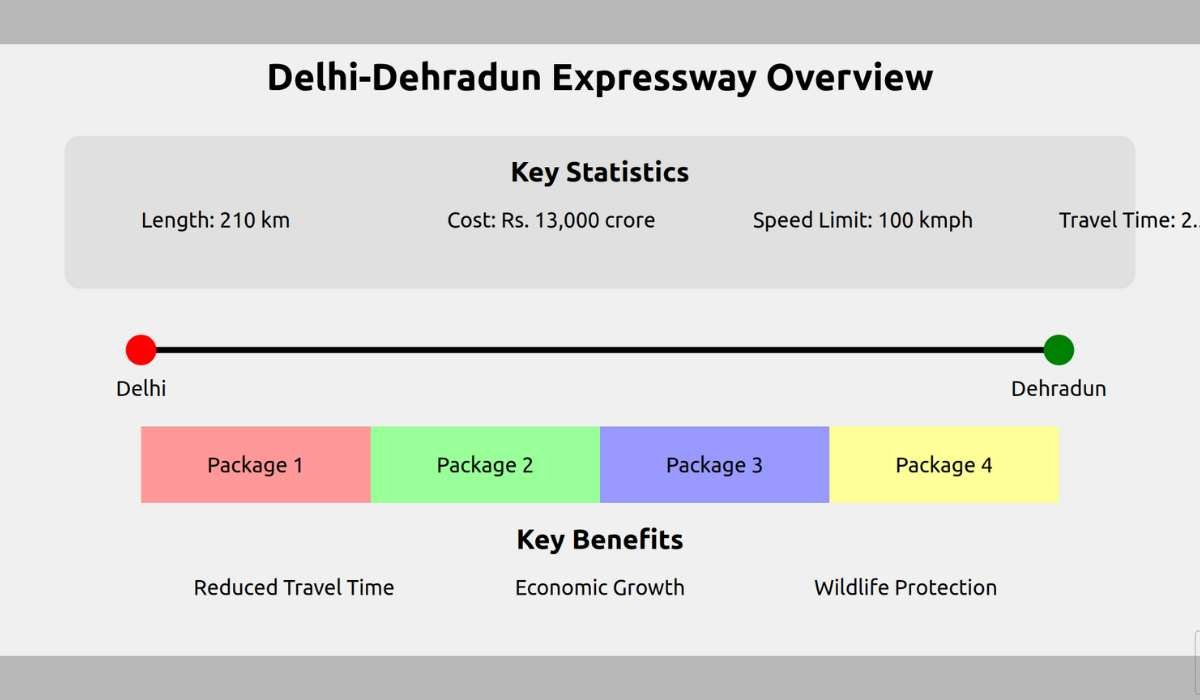In the bustling landscape of North India, two cities stand as testament to the power of urban planning – or the lack thereof. Noida and Gurugram, both part of the Delhi National Capital Region (NCR), have taken dramatically different paths in their development. While one shines as a model of meticulous planning, the other serves as a cautionary tale of rapid, uncontrolled growth. Let’s dive into the fascinating Urban Planning Comparison: Noida vs Gurugram, exploring how their distinct approaches have shaped their present and future. This urban planning comparison between Noida and Gurugram reveals the profound impact that strategic development – or its absence – can have on a city’s evolution, infrastructure, and quality of life.
The Tale of Two Cities: Noida vs Gurugram
Noida: A Vision of Planned Development
Noida’s journey began in the mid-1970s when Delhi was grappling with overpopulation. To ease the pressure on the capital, the Uttar Pradesh government launched a visionary project, leading to the creation of the New Okhla Industrial Development Authority (NOIDA) on April 17, 1976.
Noida’s development followed a structured approach:
- Meticulous planning
- Infrastructure development
- Attracting businesses and investments
This methodical planning laid the foundation for Noida’s success story.
Gurugram: The Rush for Growth
In contrast, Gurugram’s rise began in the 1990s when its proximity to Delhi’s Indira Gandhi International Airport made it an attractive business hub. However, this rapid growth came at a cost—urban planning lagged behind.
Key characteristics of Gurugram’s development include:
Unlock Your Dream Home Today!
Get personalized real estate insights delivered straight to your inbox.
- Investments and construction outpacing infrastructure planning
- Infrastructure taking a backseat until the establishment of the Gurugram Metropolitan Development Authority (GMDA) in 2016, well after the city’s growth had surged.
Infrastructure: The Backbone of Urban Development
Noida: Building for the Future
Infrastructure development was central to Noida’s growth. Key investments included:
- Wide, well-planned roads
- Efficient drainage systems
- Green belts and open spaces
- The Noida-Greater Noida Expressway
These infrastructure projects helped make Noida a desirable location for both businesses and residents.
Gurugram: Playing Catch-Up
Gurugram, on the other hand, has struggled to keep pace with its rapid growth. The city continues to face challenges such as:
- Narrow, poorly maintained roads
- Inadequate sewage systems
- Limited green spaces
- Chronic traffic congestion
These issues stem from a lack of early planning and continue to affect the city’s development.
The Monsoon Test: A Tale of Two Drainage Systems
The differences between Noida and Gurugram become most apparent during the monsoon season.
Noida: Staying Afloat
Noida’s well-planned drainage system helps the city manage heavy rains effectively:
- 14 major drains direct rainwater to the Yamuna and Hindon rivers
- Regular maintenance of drainage systems
- Water pumps placed strategically in flood-prone areas
As a result, Noida experiences far less waterlogging compared to other cities in the NCR.
Gurugram: Urban Flooding Woes
Gurugram’s monsoon challenges tell a different story:
- Urban flooding is a common occurrence
- Roads and residential areas often submerge
- Millions of rupees in property damage occur every year
- Frequent disruptions to daily life, including office closures and school shutdowns
Gurugram’s inadequate drainage system, compounded by geographical challenges, exacerbates these issues.
Geographical Advantages and Challenges
The natural geography of Noida and Gurugram plays a significant role in their urban planning outcomes.
Noida: Riverside Advantages
Noida benefits from its location between the Yamuna and Hindon rivers:
- Rivers act as natural drainage channels
- Planned green spaces around rivers help absorb excess water
- The city’s layout aligns with natural water flow patterns
Gurugram: Hilly Hurdles
Gurugram’s location near the Aravalli Hills presents unique challenges:
- Urban development disrupts natural drainage patterns
- Water from the hills flows into the city during heavy rains
- Many buildings are constructed on traditional water drainage routes
These geographical factors compound Gurugram’s infrastructure issues, particularly during the monsoon season.
Economic Impact: A Tale of Two Development Models
The urban planning strategies of Noida and Gurugram have had significant economic implications for both cities.
Noida: Sustainable Growth
Noida’s planned development has led to:
- Becoming North India’s largest electronic manufacturing hub
- Attracting major companies like Vivo and Samsung
- A thriving real estate market
- Balanced industrial, commercial, and residential zones
Gurugram: Boom and Bust
While Gurugram has seen rapid economic growth, it faces ongoing challenges:
- Home to numerous multinational companies and IT parks
- Manesar’s IMT center hosts major companies like Honda and Maruti
- However, infrastructure problems often disrupt business operations
- Annual flooding results in significant economic losses
Quality of Life: The Human Impact
Urban planning directly affects the quality of life for residents in both cities.
Noida: Planned Comfort
Noida’s residents enjoy:
- Well-planned residential areas with modern amenities
- Efficient public transportation, including metro connectivity
- Ample green spaces and parks
- Lower pollution levels compared to Gurugram
Gurugram: Daily Challenges
Gurugram’s residents often face:
- Traffic congestion and long commute times
- Limited public transportation options
- Higher pollution levels
- Frequent disruptions due to flooding and infrastructure issues
Lessons Learned: The Importance of Sustainable Urban Planning
The comparison between Noida and Gurugram highlights valuable lessons for future urban development:
- Plan First, Develop Later: Noida’s success underscores the importance of comprehensive planning before development begins.
- Invest in Infrastructure: A strong infrastructure is crucial for a city’s long-term growth and livability.
- Respect Natural Geography: Working with, rather than against, natural features can prevent long-term challenges.
- Balance Growth with Sustainability: Rapid development without adequate planning leads to ongoing issues.
- Prioritize Quality of Life: Urban planning should focus on enhancing residents’ well-being.
The Road Ahead: Future Prospects
As both cities continue to evolve, their futures look distinct:
- Noida is positioned for sustainable growth with ongoing infrastructure improvements and a commitment to its planned approach.
- Gurugram faces the challenge of addressing its infrastructure issues while managing continued growth. The establishment of the GMDA in 2016 was a step forward, but overcoming decades of unplanned development remains a significant hurdle.
A Tale of Two Futures
The urban planning comparison between Noida and Gurugram serves as a powerful case study in the importance of thoughtful urban development. Noida stands as a model of planned growth, while Gurugram highlights the risks of unchecked expansion.
As India’s urbanization continues to accelerate, the stories of these two cities offer critical insights for policymakers, urban planners, and citizens alike. The tale of Noida and Gurugram reminds us that the choices made in urban planning today will shape the lives of millions in the years to come.
Learn More About Urban Planning in India
Interested in urban planning in India? Subscribe to our newsletter for the latest updates on urban development, real estate trends, and city planning insights.
Our experts are ready to answer your questions and provide valuable insights into the world of urban planning in India.
Noida follows a meticulous planning approach with structured infrastructure development, while Gurugram has experienced rapid growth without adequate planning, leading to various urban challenges.
Noida's urban planning began in the mid-1970s as a response to Delhi's overpopulation, leading to the establishment of the New Okhla Industrial Development Authority (NOIDA) in 1976.
Key infrastructure developments in Noida include wide, well-planned roads, efficient drainage systems, green belts, open spaces, and the Noida-Greater Noida Expressway.
Gurugram faces challenges such as narrow roads, inadequate sewage systems, limited green spaces, chronic traffic congestion, and ongoing urban flooding.
Noida has a well-planned drainage system with 14 major drains and regular maintenance, resulting in less waterlogging, while Gurugram struggles with urban flooding due to inadequate drainage.
Noida benefits from its location between the Yamuna and Hindon rivers, which serve as natural drainage channels and help absorb excess water.
Noida's planned development has fostered sustainable growth, making it North India's largest electronic manufacturing hub and attracting major companies, contributing to a thriving real estate market.
Residents in Noida enjoy well-planned areas with modern amenities, efficient public transportation, and lower pollution levels, while Gurugram residents face traffic congestion, limited public transport, and higher pollution.
Lessons include the importance of comprehensive planning, investing in infrastructure, respecting natural geography, balancing growth with sustainability, and prioritizing residents' quality of life.
Noida is positioned for sustainable growth with ongoing infrastructure improvements, while Gurugram needs to address its infrastructure issues amid continued growth, following the establishment of the GMDA.
DISCLAIMER
The information provided on this website is for general informational purposes only. While we strive to keep the content up-to-date and accurate, we make no representations or warranties of any kind, express or implied, about the completeness, accuracy, reliability, suitability, or availability of the information, products, services, or related graphics contained on this website.
In no event will we be liable for any loss or damage including without limitation, indirect or consequential loss or damage, or any loss or damage whatsoever arising from loss of data or profits arising out of, or in connection with, the use of this website.
Real Estate Investment Risks
Real estate investments involve significant risks and market volatility. Property values, rental rates, and market conditions can fluctuate. Past performance is not indicative of future results.
Before Making Real Estate Decisions
Before making any real estate decision, we strongly advise you to:
- Conduct thorough due diligence
- Consult with qualified legal, financial, and real estate professionals
- Carefully review all relevant documents and contracts
- Consider your personal financial situation and investment goals
This website does not provide legal, financial, or investment advice. All content is for informational purposes only and should not be construed as professional advice or recommendations.
By using this website, you acknowledge and agree to these terms. We reserve the right to modify this disclaimer at any time without notice.






